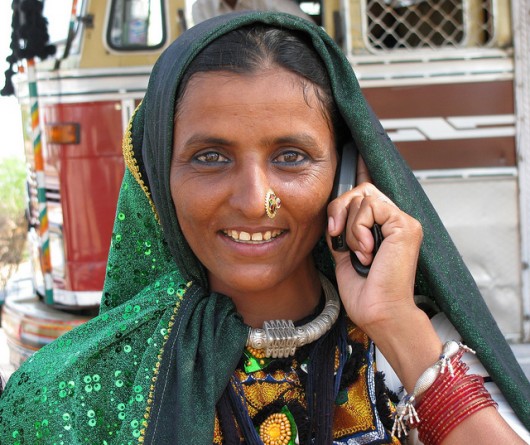Digital Technology Offers Solutions to Ending Global Poverty

Though digital technology often seems out of reach in developing countries where some people are struggling to find clean water and food, one can look to Digital India—an initiative by the Government of India to integrate digital technology into society—to see how such technologies offer solutions toward ending global poverty.
The initiatives of Digital India include creating digital infrastructure, delivering government services to citizens digitally, improving digital literacy, and expanding high-speed internet access for rural areas.
According to news site DNA India, the Government of India hopes to reach nationwide information frames by March 2017. By 2020, the government has plans to train over 150,000 students to work in the IT sector. Wi-fi access will be digitally accessible by all universities, country-wide.
According to H.C. Hong, president and CEO of Samsung India, the popularity of smartphones and mobile social media has caused a large growth in online activity and technology adaptation of young people in India.
For digital technology to become a success in developing countries, a high-skilled workforce needs to exist in the sector. This opens up the job market, allows for professional training, and expands business growth that all help to reduce poverty.
This year, Burkina Faso became the first African nation to use cloud networking technology thanks to French telecommunications company Alcatel-Lucent.
According to the African Media Agency (AMA), the Danish government will be funding the project with a $19.9 billion investment that will provide for digital public service development and the training of 100 employees.
In Burkina Faso, digital services for health, education, justice, services will be provided by the network and assist the country in facilitating economic growth. Danish Ambassador to Burkina Faso, Bo Jensen, explains the region’s digital technology solution to ending poverty:
He states, “The objectives pursued by the project are in line with the national development strategy and sectorial strategies. It is an innovative approach using state of the art technology to pursue poverty alleviation and good governance…We strongly believe that this project will lead to more transparency and improved public financial management.”
Cloud access in poor, rural areas offers information and services that may not have been accessible in certain regions of the world ever before. People have access to endless information, such as weather reports, research and stock market news—consumer information that can lead to market activity and stimulate the economy.
– Kelsey Lay
Sources: African Media Agency, Alcatel-Lucent, DNA India
Photo: Flickr
